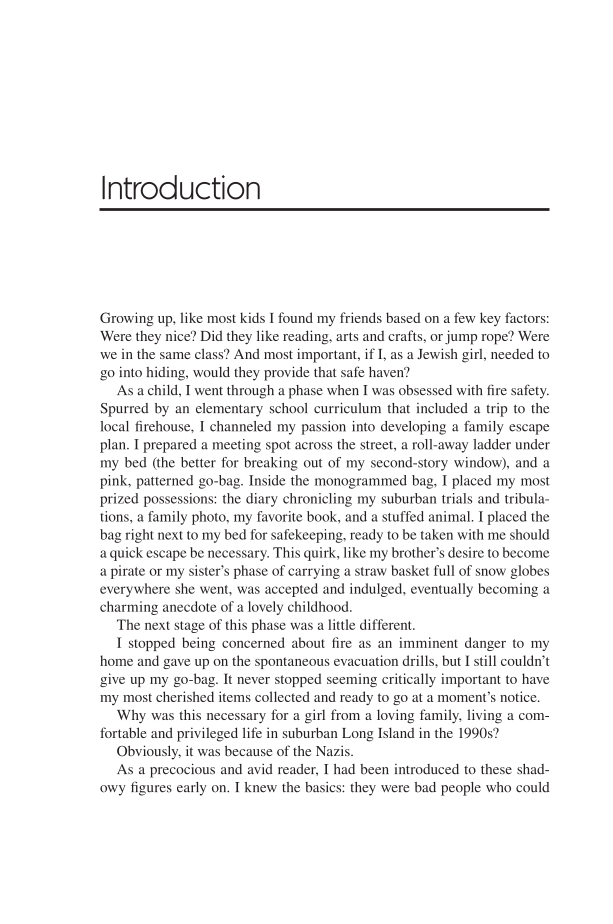Introduction Growing up, like most kids I found my friends based on a few key factors: Were they nice? Did they like reading, arts and crafts, or jump rope? Were we in the same class? And most important, if I, as a Jewish girl, needed to go into hiding, would they provide that safe haven? As a child, I went through a phase when I was obsessed with fire safety. Spurred by an elementary school curriculum that included a trip to the local firehouse, I channeled my passion into developing a family escape plan. I prepared a meeting spot across the street, a roll-away ladder under my bed (the better for breaking out of my second-story window), and a pink, patterned go-bag. Inside the monogrammed bag, I placed my most prized possessions: the diary chronicling my suburban trials and tribula- tions, a family photo, my favorite book, and a stuffed animal. I placed the bag right next to my bed for safekeeping, ready to be taken with me should a quick escape be necessary. This quirk, like my brother’s desire to become a pirate or my sister’s phase of carrying a straw basket full of snow globes everywhere she went, was accepted and indulged, eventually becoming a charming anecdote of a lovely childhood. The next stage of this phase was a little different. I stopped being concerned about fire as an imminent danger to my home and gave up on the spontaneous evacuation drills, but I still couldn’t give up my go-bag. It never stopped seeming critically important to have my most cherished items collected and ready to go at a moment’s notice. Why was this necessary for a girl from a loving family, living a com- fortable and privileged life in suburban Long Island in the 1990s? Obviously, it was because of the Nazis. As a precocious and avid reader, I had been introduced to these shad- owy figures early on. I knew the basics: they were bad people who could
Document Details My Account Print multiple pages
Print
You have printed 0 times in the last 24 hours.
Your print count will reset on at .
You may print 0 more time(s) before then.
You may print a maximum of 0 pages at a time.

































































































































































































